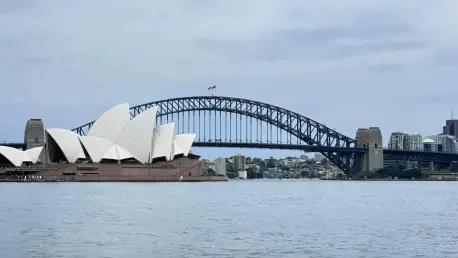In a world where urban sprawl often overshadows quality of life, imagine stepping into cities where nature, culture, and modern infrastructure blend seamlessly to create an enviable lifestyle. Australian cities like Melbourne, Sydney, and Adelaide have achieved just that, securing spots in the global top 10 for liveability according to the Economist Intelligence Unit’s Most Liveable Cities index. What sets these urban centers apart in a rapidly urbanizing world? Their consistent high rankings spark curiosity about the secret behind their success, inviting a deeper look into the factors that make them exceptional places to call home.
Defining Liveability in Australian Urban Centers
Key Metrics and Rankings
Australian cities have carved out a remarkable reputation on the global stage, with Melbourne ranking 4th, Sydney at 6th, and Adelaide breaking into the top 10 in the latest Economist Intelligence Unit’s index. These rankings stem from stellar scores in critical areas such as healthcare, education, and infrastructure, with Melbourne and Sydney often achieving near-perfect marks in access to medical services and schooling. Such metrics highlight a commitment to public welfare that many other global cities struggle to match, positioning these urban hubs as benchmarks for liveability.
A notable trend over recent years shows sustained excellence in these rankings, driven by universal healthcare systems and high safety standards. Reports from credible sources like the EIU emphasize that Australian cities stand out not only for essential services but also for their integration of green spaces and cultural amenities. Compared to counterparts in North America or Europe, these cities offer unparalleled access to parks and public facilities, reinforcing their appeal as holistic urban environments.
This consistent performance reflects a broader pattern of prioritizing resident well-being over mere economic output. Infrastructure investments, coupled with policies ensuring safety and cleanliness, create a foundation that other cities globally often reference as an ideal. The data underscores a clear message: liveability in Australia is not a fluke but a result of deliberate, systemic efforts to enhance quality of life.
Real-Life Examples of Liveability
Melbourne’s dynamic sports culture offers a vivid illustration of liveability, with events like the Australian Open drawing global crowds and fostering community spirit at venues such as the Melbourne Cricket Ground. Beyond major events, everyday life benefits from outdoor cinema screenings in lush parks, showcasing how the city integrates leisure into urban planning. These elements transform routine days into experiences rich with engagement and relaxation.
Sydney, on the other hand, exemplifies a balance of metropolitan energy and natural serenity, with Bondi Beach serving as a hub for wellness and social connection. Residents often start their mornings with a swim or a coastal walk from Bondi to Bronte, seamlessly blending fitness into their daily lives. This access to nature, paired with a bustling cityscape, creates a unique lifestyle that prioritizes health without sacrificing urban conveniences.
Adelaide, often seen as a quieter contender, shines through its proximity to natural and cultural treasures like the McLaren Vale wine region. The city’s reliable public transport system further enhances daily life, allowing even younger residents to navigate independently—a stark contrast to less dependable systems in other regions. Such practical advantages, combined with a slower pace, make Adelaide a compelling case study in accessible, stress-free urban living.
Voices of Residents: Insights on Quality of Life
Hearing directly from those who live in these cities reveals a profound appreciation for the lifestyle they afford. Cheryl Monkhouse from Adelaide describes a society that values personal time over relentless work, contrasting it with her experiences in the US where vacation time is often limited. This cultural norm of prioritizing balance, supported by infrastructure like efficient transit, shapes a daily existence free from unnecessary stress.
In Melbourne, Dani Feludu highlights the city’s cultural diversity as a cornerstone of its appeal, noting how suburban dining reflects a global palette from Mexican to Korean flavors. This melting pot atmosphere fosters a sense of belonging, making the city not just a place to live but a community to thrive in. Feludu’s perspective underscores how cultural richness translates into tangible social benefits for residents.
Sydney resident Liam Duffy points to the ease of transitioning from urban bustle to natural escapes, such as national parks, as a defining feature of life there. He contrasts this with other global cities where such access is often a luxury, emphasizing how Australia’s societal values and infrastructure support a healthier, more grounded way of living. These resident voices collectively paint a picture of cities designed with people, not just progress, in mind.
Future Prospects for Urban Liveability in Australia
Looking ahead, Australian cities are poised to maintain their liveability through strategic investments in sustainable infrastructure and expansive green spaces. Plans to enhance public transport and renewable energy initiatives from this year to 2027 aim to accommodate growing populations without compromising quality of life. These developments promise to bolster community well-being by ensuring that urban expansion aligns with environmental and social priorities.
However, challenges loom on the horizon, with housing affordability and urban sprawl threatening to erode some of the gains made in liveability rankings. Rising costs in cities like Sydney could strain accessibility for lower-income residents, while unchecked growth risks diminishing the natural assets that define these urban centers. Addressing these issues will require innovative policies that balance development with equity and preservation.
On a broader scale, the Australian model offers valuable lessons for global urban planning, particularly in harmonizing modernity with nature. Yet, risks such as climate change, especially in coastal areas like Sydney, demand urgent attention to protect liveability gains. How these cities adapt to such threats will likely influence their future standings and serve as a blueprint—or cautionary tale—for others worldwide.
Lessons from Australian Urban Excellence
Reflecting on the journey of Australian cities in shaping urban liveability, their success stems from a potent mix of natural beauty, robust infrastructure, cultural vibrancy, and a lifestyle that champions balance. This blend not only elevated Melbourne, Sydney, and Adelaide to global recognition but also set a precedent for what cities could achieve with the right priorities. Their high rankings are a testament to years of deliberate focus on resident well-being over mere economic metrics.
Moving forward, the challenge lies in sustaining this excellence amidst evolving global pressures. Policymakers and urban planners must innovate to tackle housing affordability and climate risks, ensuring that the essence of liveability remains intact. Exploring solutions like community-driven development and green technology could safeguard these cities’ legacies while inspiring others to adopt similar frameworks.
Beyond preservation, there’s an opportunity to export this model by sharing best practices through international collaboration. Urban centers worldwide stand to benefit from studying Australia’s emphasis on integrating nature with infrastructure. The next steps involve fostering dialogue among global leaders to adapt these principles to diverse contexts, ensuring that the pursuit of liveable cities becomes a universal endeavor rather than a localized triumph.









